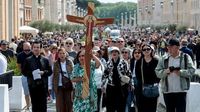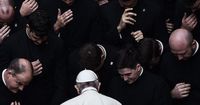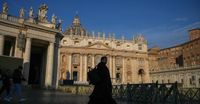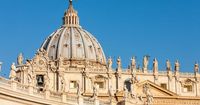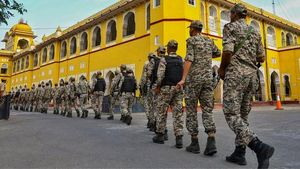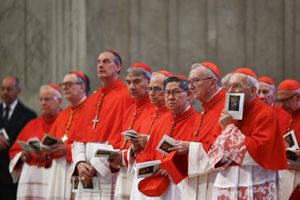In the early hours of Easter Monday, April 21, 2025, Pope Francis, the leader of the Roman Catholic Church and head of state of the Vatican City, passed away at the age of 88. His death marks the beginning of an 'interregnum,' a period of vacancy in the papal office known as "sede vacante." This term reflects the absence of a pope and initiates a series of ceremonial and administrative protocols that the Vatican has followed for centuries.
Upon the pope's death, the camerlengo, currently Cardinal Kevin Farrell, is tasked with confirming the death. He does this by calling the pope's baptismal name three times while gently tapping his forehead with a silver hammer. Following this, a physician is summoned to officially record the death. During the sede vacante, the camerlengo assumes significant responsibilities, including managing the assets of the Holy See, organizing the funeral, and destroying the papal seal ring.
As the Vatican enters the novemdiales, a nine-day mourning period, requiem masses will be held, allowing Catholics to pay their respects. Pope Francis will lie in state in an open coffin at St. Peter's Basilica, where thousands are expected to come to bid farewell. On the ninth day, he will be buried after a mass at St. Peter's Square, presided over by Cardinal Giovanni Battista Re, the Dean of the College of Cardinals.
Unlike many of his predecessors, Francis opted for a simpler funeral. He had previously expressed his desire for a modest burial, stating, "We have simplified it considerably, and I will be the first to test it!" His body will be placed in a single wooden coffin, a departure from the traditional three-coffin arrangement used for past popes. This decision reflects his belief that a pope should be buried with dignity, like any other Catholic, without being elevated above others.
In a significant break from tradition, Pope Francis chose not to be buried in the crypt beneath St. Peter's Basilica, where nearly 100 popes have been laid to rest. Instead, he wished to be interred at the Basilica of Santa Maria Maggiore, one of his favorite churches in Rome. This decision makes him the first pope in over a century not to be buried in the Vatican.
As the mourning period unfolds, the cardinals will gather in Rome to prepare for the conclave, the secretive assembly where a new pope will be elected. This conclave is expected to commence between fifteen to twenty days after the pope's funeral. Cardinal Farrell, as camerlengo, will oversee the arrangements, ensuring that the necessary protocols are followed.
The conclave will be conducted behind closed doors in the Sistine Chapel, where the cardinals will discuss the future direction of the Catholic Church and the qualities required in the new pope. The voting process will take place in four rounds each day, with each cardinal casting their vote by depositing a folded ballot into a chalice. If no candidate receives the required two-thirds majority, the ballots will be burned, producing black smoke from the chapel's chimney, signaling to the outside world that a new pope has not yet been elected.
Currently, there are 135 cardinals eligible to vote, exceeding the maximum of 120 set by Pope Paul VI in 1975. This situation arises from Pope Francis's appointments, which have diversified the College of Cardinals, incorporating members from regions where the Catholic Church continues to grow, particularly in the Global South. As a result, only 38 percent of the cardinals now come from Europe, reflecting the Church's shifting demographics.
Once a cardinal receives the necessary votes, he will be asked if he accepts the position of pope. If he agrees, he will choose a papal name and don the papal robes. The last ballots will be burned, and white smoke will emerge from the chimney, signaling the election of a new pope. The dean of the cardinals will then appear on the balcony of St. Peter's Basilica, declaring "habemus papam!"—"we have a pope!"—to the assembled crowd below.
As the world watches, speculation abounds regarding the potential candidates for the papacy. Archbishop Tarcisio Isao Kikuchi from Tokyo is considered a strong contender, alongside others from various regions. The outcome of the conclave remains uncertain, as the process is shrouded in secrecy and tradition. Historically, the conclave has produced unexpected results, and the dynamics among the cardinals can shift rapidly.
In the wake of Pope Francis's passing, the Catholic Church and the Vatican find themselves navigating a transitional period filled with both mourning and anticipation. The legacy of Pope Francis, known for his emphasis on mercy and social justice, will undoubtedly influence the discussions and decisions made in the coming weeks. With a diverse and youthful College of Cardinals, the future direction of the Church may reflect the changing landscape of Catholicism worldwide.
